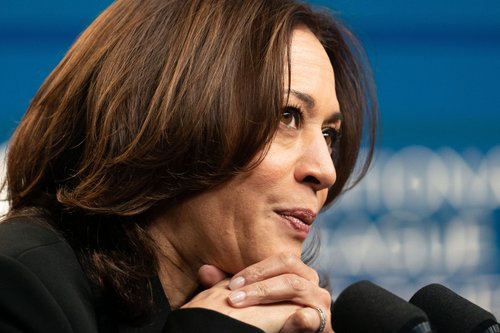AI and ageism in the workplace
Dec 28, 2023
6 mins


Freelance translator and journalist
In 1969, psychiatrist and age advocate Robert N. Butler coined the term “ageism” in response to a small event in a Maryland suburb. A once affluent apartment complex was to be turned into public housing for the elderly poor. Worried that an influx of older and less wealthy people change their neighborhood for the worse, the residents sparked a conversation that Butler saw as pivotal. In reply, Butler wrote in the journal The Gerontologist, that, “Ageism might parallel racism as the great issue of the next 20 to 30 years.” More than half a century later, society still grapples with both ageism and racism, yet the former remains an often-overlooked concern and has even been labeled the last acceptable prejudice.
The double challenge of unemployment and an ageing workforce
Amid a stubborn worker shortage in the US, where less than 63% of the labor force is employed, the challenge is underscored by the US Chamber of Commerce’s finding that 1.47 million workers are missing from the workforce compared to the beginning of 2020. With 9.6 million open jobs, it means that even if every unemployed worker were to fill a vacancy within their respective industry, there would still be millions of unfilled job positions. Meanwhile, a report by Allianz Research affirms that 30% of the global workforce will be 50 or older by 2050. In the US, the share of employed workers ages 60 and over doubled between the year 2000 and 2020, from roughly 7% and 14%. And it begs the question: With millions of unfilled jobs and an aging population, will the technologies currently shaking up the labor market help or hurt the growing pool of older workers?
Ageism and AI at work
“AI has increased ageism in the workplace,” says Sheila Callaham, Executive Director at Age Equity Alliance, a company dedicated to expanding age equity in the workplace. “Most notably through the screening of candidates and ignoring applicants with more years of experience.”
Callaham learned this all too well when searching for a job in her early 50s. “I applied for hundreds of positions for which I was qualified. I meticulously aligned my skills and experiences with the requirements of the role and never heard from the recruiters,” she says. “When I would reach out to them, I often heard they couldn’t find my application. They never found it because their AI had tossed it out!” Callaham’s job search lasted three years, but she was never offered a position even after forwarding job applications directly to recruiters to escape the AI trap.
But there are two sides of the coin. “AI is the greatest opportunity for older people and the greatest threat for them too,” says Charles McLachlan, Founder of the Portfolio Executive Growth Academy where he talks to 10-15 people a week who feel they’re being pushed out of their current jobs. To McLachlan, one of the biggest differences between humans and AI is experience. “AI cannot be a substitute for the 20, 30, or 40 years of experience you’ve got,” he says, “and however good the AI, it doesn’t understand context or collaboration.” Experience, frame of reference, and human connection are characteristics AI does not possess, at least not yet.
Adapting to technology
Ashton Applewhite, author of the book This Chair Rocks: A Manifesto Against Ageism, agrees with McLachlan. “AI has the potential to reduce age bias or to make it worse.” She believes tech is neutral, but humans are not.
“Like everyone else, programmers are biased. A lot of code is written by men, who are mostly young and who work in a notoriously ageist industry,” says Applewhite, “and their code is likely to reflect that.” As stated in a report published in The Gerontologist, older adults are often excluded from the research and design of digital technologies, leaving them with low adoption rates and unfriendly user experiences. Older employees can and do learn new technologies, but they’re given the opportunity less often than their younger counterparts. “Ageism is so rampant that companies would prefer to spend less money and train younger employees,” Callaham says.
A report by the Society of Human Resource Management (SHRM) states that 30% of the US workforce has felt discriminated against based on their age at some point in their career. The same report notes that ageism is also prevalent in the HR departments. “Human resource professionals routinely acknowledge that older hires perform as well as younger ones, yet remain reluctant to hire them,” Applewhite says. According to Callaham, there are many excuses employers use to avoid bringing in older candidates. “These ageist assumptions include wouldn’t fit in the culture, would intimidate a younger manager, and would expect too much money,” she says.
Multigenerational teams
But as argued in a 2022 article in Harvard Business Review, multigenerational teams bring plenty to the table, including complementary skills, abilities and networks. If members are willing to learn from each other’s differences, age-diverse teams can offer boosted decision-making, collaboration and overall performance. But the article also notes that while five generations are working together in American workplaces for the first time, only 8% of organizations include age as part of their DEI strategy.
“Just like race and gender, age is a criterion for diversity,” Applewhite says. “We know that diverse teams work and perform better and in our increasingly globalized world, diversity is key.”
McLachlan advises companies to “Start your campaign against ageism as early as possible. You need to challenge the culture at every opportunity.” Even though laws against discrimination at work exist in the US, many organizations don’t have the same discrimination policies surrounding ageism as they do for discrimination against race, gender, ethnicity, or sexual orientation. McLachlan believes age is the least protected characteristic in DEI policies.
A good example is the Coca-Cola company’s goal to have its employee population reflect the broader US population. By 2030 Coca Cola aims to align its staff with U.S. census data, including 13% Black, 18% Hispanic, and 6% Asian. “If companies used that as a reference [for age],” Callaham asserts, “older people wouldn’t find it so difficult to find and keep a job.”
Shift the negative narrative
Of course, in an economy where many young people are opting out of the nine-to-five grind to start their own businesses, older people can do the same. McLachlan tells the story of a finance director in his mid-50s who sought McLachlan’s services when his employment in a large company was being threatened. McLachlan guided him through a transition to running his own business. Today, he’s a trusted advisor to CEOs and in addition to taking home a bigger paycheck, he loves the variety and flexibility of his new job. However, not everyone can or wants to leave their job to run their own business. So if you’re experiencing ageism at work and still want to stay, here are a few expert tips:
Stop doing this!
At times, older job candidates leave early accomplishments off their resumes or fudge their age to appear younger. “We each need to do what we need to do,” Applewhite says, “but as long as we do these things, we give a pass to discrimination.” These kinds of actions are bad for us emotionally and psychologically, and we often feel ashamed afterward.
Don’t let age-specific language put you off
After speaking with dozens of people in their late 40s and early 50s, McLachlan confides that many of them avoid applying for roles with the words “energetic” or “innovative” in the job description. “These are signals that organizations use to say, ‘We want younger people,’ and these stereotypes are incredibly pervasive which you’d never get away with in a gender context,” he admits.
Create multiple income streams
McLachlan believes it’s good for people who encounter ageism to freelance their services or find organizations that hire part-time. He advises older people to transition out of full-time, permanent work and start thinking like the younger generation. They figure out side hustles, contribute to the gig economy, and find other ways to supplement their income. “The most powerful strategy is that you have more than one job so you’re not relying on a single employer,” McLachlan says.
Human connection matters
“Move to roles where you can interact directly with people,” McLachlan counsels. Offering amazing experiences and tailored personal care is becoming important in many jobs. For example, according to the US Bureau of Labor Statistics, the employment of home health providers was projected to increase by 22% from 2022 to 2023, faster than the average for all other occupations. Overall, as AI increases, so does our need for human connection.
Leverage your experience
McLachlan also recommends that older employees move from doing roles to mentoring ones. “You’re playing on your knowledge, skills, and experience rather than your capacity to get things done,” he says.
As DEI initiatives expand policies on ageism and the average age of the labor force steadily increases, we can expect ageism to decline and work to improve for older employees. Callaham says, “Employers who dismiss older people are living in a bubble, and given the continued shifting of demographics, that bubble will soon pop and they’ll be playing catch up to forward-thinking employers who understand the necessity of integrating all aged workers into the workplace.”
Photo: Unsplash
Follow Welcome to the Jungle on Facebook, LinkedIn, and Instagram to get our latest articles every day, and don’t forget to subscribe to our newsletter!

More inspiration: DEI

Sh*t’s broken—Here’s how we fix work for good
Built by and for a narrow few, our workplace systems are in need of a revolution.
Dec 23, 2024

What Kamala Harris’s legacy means for the future of female leadership
The US presidential elections may not have yielded triumph, but can we still count a victory for women in leadership?
Nov 06, 2024

Leadership skills: Showing confidence at work without being labeled as arrogant
While confidence is crucial, women are frequently criticized for it, often being labeled as arrogant when they display assertiveness.
Oct 22, 2024

Pathways to success: Career resources for Indigenous job hunters
Your culture is your strength! Learn how to leverage your identity to stand out in the job market, while also building a career
Oct 14, 2024

Age does matter, at work and in the White House
What we've learned from the 2024 presidential elections about aging at work.
Sep 09, 2024
The newsletter that does the job
Want to keep up with the latest articles? Twice a week you can receive stories, jobs, and tips in your inbox.

Looking for your next job?
Over 200,000 people have found a job with Welcome to the Jungle.
Explore jobs